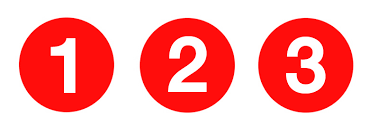VICTORY BELONGS TO THE MOST TENACIOUS- THE FRENCH OPEN

-
Category
-
Submitted By
-
28May, 2024
Every tennis enthusiast can reel off the Grand Slam lineup: the Australian Open, the French Open (Roland-Garros), Wimbledon, and the US Open. Yet, two of these prestigious tournaments boast historical names, while the other two are identified by their countries. Wimbledon’s storied tradition is well-known, but why does the French Open earn the title Roland-Garros?
As the Roland-Garros tournament approaches, it's time to delve into its rich history and unique challenges. We'll explore the remarkable winners, the distinct clay courts, and the legacy that continues to inspire a new generation of tennis fans.
I have been fortunate enough to attend Wimbledon, the US Open and the Australian Open on several occasions. It has therefore been an incredible honour to be invited to the tournament this year to experience all of its culture, its excitement and its history. There is no doubt that the tournament is like no other and it was a chance to tick off a bucket list event. This year says good bye to the King of Clay which makes the two weeks even more memorable.
The Origins of Roland-Garros
The name Roland-Garros honors an individual whose life had nothing to do with tennis. Roland Garros was a pioneering aviator, a war hero who invented the onboard machine gun for fighter planes. His valor and ingenuity made him a symbol of French resilience. After being imprisoned during World War I, he escaped and returned to fight, ultimately losing his life at just 29.
In 1928, ten years after his death, a new tennis facility was built to host the Davis Cup, and it was named Stade Roland Garros to commemorate this national hero. This homage extends beyond his wartime achievements, reflecting the spirit of tenacity and innovation that epitomizes the best tennis players.
The French Open: An Overview
The French Open is the second Grand Slam tournament of the year, following the Australian Open and marking the end of the ATP clay court season. Unlike its counterparts, Roland-Garros is the only Grand Slam event played on clay courts.
Contrary to what the name suggests, these courts are not made of traditional clay. Known as "la terre battue," the surface consists of crushed brick, giving it a characteristic reddish hue. Below this layer lies limestone, volcanic rock, gravel, and bedrock. This composition makes for slower, higher-bouncing balls, offering a distinct challenge compared to grass or hard courts. The Roland-Garros complex boasts 18 such courts, each demanding exceptional skill and strategy from players.
A Storied Venue
Despite its relatively small size—21 acres compared to other Grand Slam venues—Roland-Garros offers a rich blend of history and modern amenities. Visitors can enjoy matches, dine in its restaurants, stroll through gardens, or explore its museum. This year, the French Open runs from May 22 to June 11, promising three weeks of thrilling tennis.
The Women's Singles Cup
The women's singles tournament at Roland-Garros began in 1897 with just four players. Today, over 100 contenders vie for the prestigious Suzanne Lenglen Cup, named after the first Number 1 ranked female tennis player and fashion icon who won eight Grand Slam titles.
This year’s competition features top players like Naomi Osaka, Angelique Kerber, and Iga Świątek, the current World Number One. Coco Gauff and Aryna Sabalenka also aim to leave their mark, though the road to victory is fraught with formidable opponents.
The Men's Singles Cup
The men's trophy, la Coupe des Mousquetaires, honours four legendary French players—Jean Borotra, Jacques Brugnon, Henri Cochet, and René Lacoste—who dominated tennis in the early 20th century and led France to six Davis Cup victories.
Rafael Nadal, the "King of Clay," has won the Musketeers' Cup 14 times and holds the record for the longest winning streak on clay courts. However, coming off an injury, he is not the favorite this year. Rising star Carlos Alcaraz, currently ranked third in the ATP, and seasoned champion Novak Djokovic are among the top contenders.
Clay Court Challenges
Clay courts require a different skill set than grass or hard courts. The slower surface demands agility, endurance, and strategic play. Legends like Pete Sampras and Roger Federer found clay challenging, while players like Nadal and Świątek thrive, using their light-footed agility and varied gameplay to excel.
This year's Men's Singles draw features 99 contenders and numerous alternates, each striving to qualify for the main event. Whether Nadal can overcome his injuries or Alcaraz can capitalise on his momentum remains to be seen.
The Legacy of Roland-Garros
While the winners take home a replica of the iconic trophies, the original Cups remain at Roland-Garros, symbolising the tournament's enduring legacy. The prize money is equal for men and women, emphasising the tournament's commitment to equality.
As we celebrate the start of the French Open, we honour the spirit of Roland Garros, the hero, and the remarkable athletes who embody his resilience and innovation. The clay courts of Roland-Garros continue to be a battleground where history is made and legends are born.
[Submitted by Kevin Rademeyer]


















